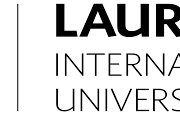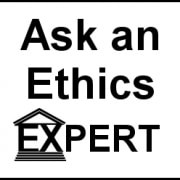Caterina Bulgarella Dispels the False Meme that Culture Is Intangible
What are your current areas of work and research?
Both my work and research focus on organizational culture. Over time, this work has become one and the same with building ethics in organizations, consistent with the evolution companies have been going through over the past 10-15 years. Ethical behavior underlines a powerful cocktail of ingredients (e.g., self-regulation, moral awareness, ability to ‘self-organize’ in the face of missing information, etc.). These human qualities and behaviors are also what organizations need to master the unprecedented level of complexity and change they face today.
What do business get wrong and right about leadership development and how can they better integrate ethics and culture onboarding to new executives?
Companies have consistently invested in leadership development (LD), demonstrating awareness that leadership is a point of arrival. This is an element of maturity. What’s been missing is actual clarity on what leadership entails. Whether the focus is the leader herself (e.g., the traits needed to be leader), the skills leadership entails, the impact leadership can make, leadership development needs to ‘retire’ the idea that leaders are superheroes—a mindset that undercuts the very progress LD seeks to make.
We need leaders to become more effective at influencing people and systems in positive ways, but we also need systems that nudge leadership development and leadership behavior. This goes beyond creating learning experiences for ‘high-potential managers. From introducing dynamic feedback loops, to creating real-time checks and balances, to reshaping old organizational structures, the future of LD is all about integrating individual-level and system-level interventions.
Describe some of the latest trends coming out of the field of organizational behavior. Which are the most promising?
We are witnessing a powerful shift in ideas, practices, and expectations. On the one hand, we have the scientific insights to devise more effective interventions and be more exacting about their impact. For example, we now know that people’s ability to engage in ethical behavior is affected by a number of contextual factors irrespective of a person’s desire to do the right thing. Why does this represent a shift? Because it forces us to think about ethics in organizations beyond absolute moral appeals (e.g., values) or generic notions, creating an opportunity to engineer work environments and cultures with greater rigor.
At the same time, business and organizations are also evolving as a result of slow and fast macro trends. In this regard, the evolutionary and developmental perspective reminds us that the arc of progress also encompasses societal and individual consciousness. The brewing aspiration for new organizational models (e.g., holocracy, teal, etc.) is a clear example of that. But we are still experimenting; we haven’t yet met our aspiration with the right practices. And this is where science and human progress need to converge.
As a “Culture Architect” how do you build a successful foundation for culture to thrive?
Two precepts are essential: 1. Simplify but do not trivialize; 2. Be clear about what you are trying to affect and architect accordingly.
The first precept is tricky. Not only is culture inherently complex, but it encompasses multiple levels (e.g., values, beliefs, behaviors, systems, processes etc.). It’s this complexity that creates the false meme that ‘culture is intangible,’ making it all the more important for practitioners to rely on a valid model and the right organizing principles. At the same time, we should avoid frames that trivialize culture by reducing it only to one thing. They do not help us think about important interdependencies, which is the one aspect we need to focus on to successfully affect culture in the long term.
The second precept helps us better understand how we can successfully use the model we are relying on, turn it into a strategy for change, and actually produce change. We should be crystal clear on what we are trying to affect and the means we are going to use to bring about the desired change. Are we trying to make people more ethical? Or more ethically aware? Are we trying to engage the workforce? Are we trying to accelerate internal innovation? These are different objectives, and they require a different focus.
How do you think the academic research community can add value to organizations trying to improve their ethics?
The academic research community has advanced our understanding of human behavior in profound ways, reframing the conversation and shaping the agenda for years to come. Its engagement with organizations and governments is on the rise. Only last month we heard that the U.K. enlisted behavioral scientists to fight corruption. All in all, this trend has the potential to turn into a real partnership, provided both parties are willing to lose something.
Business must start paying attention to what science has to say more consistently—not only when it’s in crisis mode. This means it must develop a willingness to expose its own vulnerabilities, and even become the object of serious research. At the same time, the academic community must:
- Expand its objectives beyond the accumulation of basic knowledge;
- Stress-test the versatility of its own methods;
- And dare become more receptive to the practical challenges and constraints that affect business today.
We all agree feedback is crucial for improving performance. What are some tips from companies or research that you can share about implementing a successful feedback process?
Give feedback that increases self-efficacy. That doesn’t mean give positive feedback at all costs, but give insights that can strengthen people’s agency over their own performance. This requires a number of shifts relative to traditional performance management approaches:
- Frame performance as a learning process;
- Help performers articulate a theory of impact for what they do, which will help them set the right learning goals;
- Ensure the feedback delivered is consistent with the learning goals;
- Provide feedback at a cadence set by the performer herself to ensure maximum consistency between the value and relevance of the feedback and the learning goals.
- Take stock at the end of the cycle by assessing learning not performance per se.
Talk about the current status of culture assessment. How can companies measure and understand their organizational culture?
There is a lot of confusion when it comes to culture measurement. Instruments abound, but not all assessments are created equal. Another complicating factor is that the commodification that has taken place in the survey industry over the past 15 years has reduced competency thresholds and quality standards. But while little expertise is required to conduct certain types of surveys, this is not true for culture assessments given their inherent complexity. Another challenge is that the differences between culture measurement and employee engagement measurement are not fully clear. Finally, there is the meme that culture cannot be measured. But that is also false. Not only can culture be measured, but organizations should make a commitment to assessing their own culture on a regular basis using a robust culture measurement tool.
As for guidelines on what assessment to use, the choice should fall on an instrument born out of solid, scientific research and based on a valid culture model. Why is culture measurement not a perk but a necessity? Because that’s the only way to gain the insights to design meaningful, impactful culture work. Let’s assume that senior leadership represented the weakest link in organization X’s culture. A culture assessment can help see these types of gaps, setting the agenda and providing clarity on what should be done next. Conversely, an approach to culture based on ‘best practices,’ a generic model or ‘a little of everything’ is likely to be ineffectual if not altogether detrimental.
If you could give one piece of ethics advice to companies, what would it be?
Be honest and crystal clear when it comes to committing to ethics. Understand the current culture with the help of the right assessment tool, and figure out how much progress you can genuinely commit to going forward. Companies should never purport a focus on ethics they do not mean, though it might be tempting to do so to comply with guidelines and regulatory requirements. It’s a terrible business practice, in addition to being a dreadful culture mannerism. Any type of posturing around ethical conduct ruins the chances for building strong ethics later on, when the organization is finally ripe for it. The costs of pretending are multifold. We need business to be humble and realistic, and we want companies to make real progress, not to proclaim a level of rectitude and morality at odds with the way things are run. False ethics manifestos mislead employees, inflate senior leadership’s self-image, deflect responsibilities, take advantage of customers’ trust, and create the pre-conditions for a survivalist, self-interested climate.
If you could give one piece of ethics advice to individuals, what would it be?
As a member of the organization, reflect on the current culture and your role in it. At a certain level, we are all culture contributors, which brings up the issue of ethical responsibility and whether we should apply it to people in organizations beyond the traditional requirement of abiding the law. But as individuals we owe it to ourselves to make sure we better understand our own values because, as soon as we join an organization, we may be challenged to revise our personal code of conduct. And, unfortunately, if behavioral science has taught us anything, odds are we will fold under the pressure of certain contextual factors. We may start rationalizing, compartmentalizing, recalibrating, and so on. This imperceptible, daily bargaining with our own values is bound to have an impact on ourselves and the culture around us. The latest evidence about sexual harassment and bullying in the workplace is a perfect example. These behaviors have gone on for a long time, but it’s still unclear what responsibility we bear toward them.







